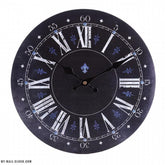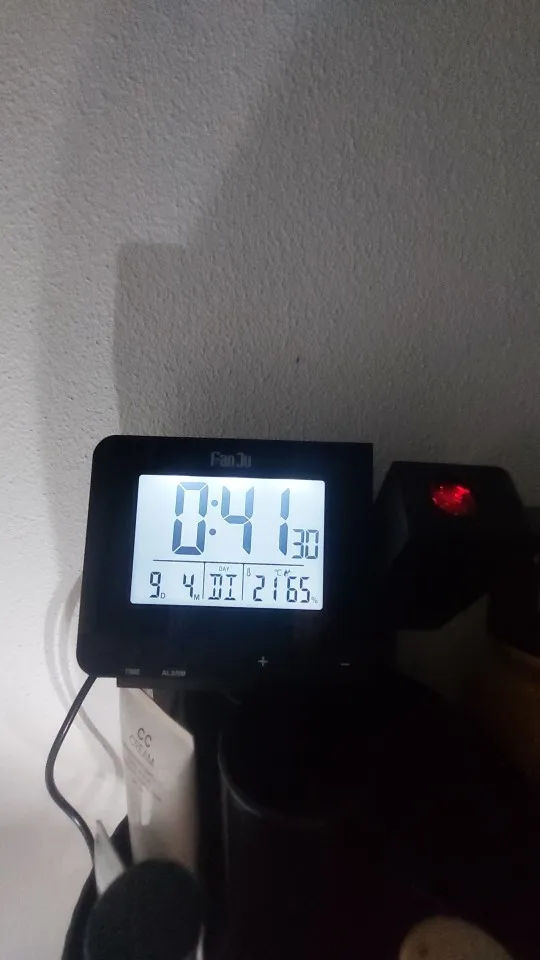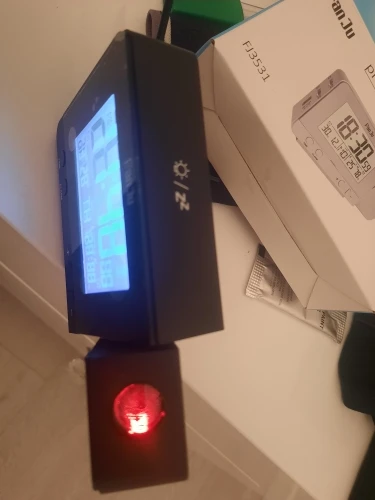Antique Wall Clock
-
Vintage Clock Vinyl Effect
🚚 Delivery Time+- Free Standard Shipping: 7-12 Business Days The processing of your order, the manufacturing of your products and the delivery (Offered) requires a delay of 7 to 12 working days maximum. We make every effort to ensure that you receive your order...- $99.90
$99.90- $99.90
- Unit price
- per
Save $0.00 -
Vintage Clock Boat on the Nile
🚚 Delivery Time+- Free Standard Shipping: 7-12 Business Days The processing of your order, the manufacturing of your products and the delivery (Offered) requires a delay of 7 to 12 working days maximum. We make every effort to ensure that you receive your order...- From $39.90
$39.90- From $39.90
- Unit price
- per
Save $0.00 -
Vintage Clock Colored Wood
🚚 Delivery Time+- Free Standard Shipping: 7-12 Business Days The processing of your order, the manufacturing of your products and the delivery (Offered) requires a delay of 7 to 12 working days maximum. We make every effort to ensure that you receive your order...- $99.90
$99.90- $99.90
- Unit price
- per
Save $0.00 -
Vintage Clock Rustic Charm
🚚 Delivery Time+- Free Standard Shipping: 7-12 Business Days The processing of your order, the manufacturing of your products and the delivery (Offered) requires a delay of 7 to 12 working days maximum. We make every effort to ensure that you receive your order...- $49.90
$49.90- $49.90
- Unit price
- per
Save $0.00 -
Vintage Clock Monceau Garden
🚚 Delivery Time+- Free Standard Shipping: 7-12 Business Days The processing of your order, the manufacturing of your products and the delivery (Offered) requires a delay of 7 to 12 working days maximum. We make every effort to ensure that you receive your order...- $44.90
$44.90- $44.90
- Unit price
- per
Save $0.00 -
Vintage Clock Timeless Numerals
🚚 Delivery Time+- Free Standard Shipping: 7-12 Business Days The processing of your order, the manufacturing of your products and the delivery (Offered) requires a delay of 7 to 12 working days maximum. We make every effort to ensure that you receive your order...- From $39.90
$39.90- From $39.90
- Unit price
- per
Save $0.00 -
Vintage Clock Beaune Bressandes
🚚 Delivery Time+- Free Standard Shipping: 7-12 Business Days The processing of your order, the manufacturing of your products and the delivery (Offered) requires a delay of 7 to 12 working days maximum. We make every effort to ensure that you receive your order...- $49.90
$49.90- $49.90
- Unit price
- per
Save $0.00 -
Vintage Clock Retro Metal
🚚 Delivery Time+- Free Standard Shipping: 7-12 Business Days The processing of your order, the manufacturing of your products and the delivery (Offered) requires a delay of 7 to 12 working days maximum. We make every effort to ensure that you receive your order...- From $99.90
$99.90- From $99.90
- Unit price
- per
Save $0.00 -
Warm Degraded Vintage Clock
🚚 Delivery Time+- Free Standard Shipping: 7-12 Business Days The processing of your order, the manufacturing of your products and the delivery (Offered) requires a delay of 7 to 12 working days maximum. We make every effort to ensure that you receive your order...- $39.90
$39.90- $39.90
- Unit price
- per
Save $0.00 -
Vintage Versailles Palace Clock
🚚 Delivery Time+- Free Standard Shipping: 7-12 Business Days The processing of your order, the manufacturing of your products and the delivery (Offered) requires a delay of 7 to 12 working days maximum. We make every effort to ensure that you receive your order...- $49.90
$49.90- $49.90
- Unit price
- per
Save $0.00 -
Silence Dull Vintage Clock
🚚 Delivery Time+- Free Standard Shipping: 7-12 Business Days The processing of your order, the manufacturing of your products and the delivery (Offered) requires a delay of 7 to 12 working days maximum. We make every effort to ensure that you receive your order...- $39.90
$49.90- $39.90
- Unit price
- per
Save $10.00 -
Vintage Blue Travel Clock
🚚 Delivery Time+- Free Standard Shipping: 7-12 Business Days The processing of your order, the manufacturing of your products and the delivery (Offered) requires a delay of 7 to 12 working days maximum. We make every effort to ensure that you receive your order...- From $39.90
$39.90- From $39.90
- Unit price
- per
Save $0.00 -
Road 66 Vintage Clock
🚚 Delivery Time+- Free Standard Shipping: 7-12 Business Days The processing of your order, the manufacturing of your products and the delivery (Offered) requires a delay of 7 to 12 working days maximum. We make every effort to ensure that you receive your order...- From $34.90
$39.90- From $34.90
- Unit price
- per
Save $5.00 -
Arc de Triomphe Vintage Clock
🚚 Delivery Time+- Free Standard Shipping: 7-12 Business Days The processing of your order, the manufacturing of your products and the delivery (Offered) requires a delay of 7 to 12 working days maximum. We make every effort to ensure that you receive your order...- From $39.90
$39.90- From $39.90
- Unit price
- per
Save $0.00 -
Vintage Clock Cooking School
🚚 Delivery Time+- Free Standard Shipping: 7-12 Business Days The processing of your order, the manufacturing of your products and the delivery (Offered) requires a delay of 7 to 12 working days maximum. We make every effort to ensure that you receive your order...- From $39.90
$39.90- From $39.90
- Unit price
- per
Save $0.00 -
Vintage Clock Antique Copper
🚚 Delivery Time+- Free Standard Shipping: 7-12 Business Days The processing of your order, the manufacturing of your products and the delivery (Offered) requires a delay of 7 to 12 working days maximum. We make every effort to ensure that you receive your order...- $39.90
$39.90- $39.90
- Unit price
- per
Save $0.00 -
Vintage Clock Wristband Effect
🚚 Delivery Time+- Free Standard Shipping: 7-12 Business Days The processing of your order, the manufacturing of your products and the delivery (Offered) requires a delay of 7 to 12 working days maximum. We make every effort to ensure that you receive your order...- $39.90
$39.90- $39.90
- Unit price
- per
Save $0.00 -
Bouquet of Lilies Clock
🚚 Delivery Time+- Free Standard Shipping: 7-12 Business Days The processing of your order, the manufacturing of your products and the delivery (Offered) requires a delay of 7 to 12 working days maximum. We make every effort to ensure that you receive your order...- $29.90
$29.90- $29.90
- Unit price
- per
Save $0.00 -
Vintage Clock World Map
🚚 Delivery Time+- Free Standard Shipping: 7-12 Business Days The processing of your order, the manufacturing of your products and the delivery (Offered) requires a delay of 7 to 12 working days maximum. We make every effort to ensure that you receive your order...- $75.20
$0.00- $75.20
- Unit price
- per
Save $-75.20 -
Industrial Clock Vintage Coffee
🚚 Delivery Time+- Free Standard Shipping: 7-12 Business Days The processing of your order, the manufacturing of your products and the delivery (Offered) requires a delay of 7 to 12 working days maximum. We make every effort to ensure that you receive your order...- $39.90
$49.90- $39.90
- Unit price
- per
Save $10.00 -
Vintage Orchid Flower Clock
🚚 Delivery Time+- Free Standard Shipping: 7-12 Business Days The processing of your order, the manufacturing of your products and the delivery (Offered) requires a delay of 7 to 12 working days maximum. We make every effort to ensure that you receive your order...- From $39.90
$39.90- From $39.90
- Unit price
- per
Save $0.00 -
Vintage Clock St Hubert
🚚 Delivery Time+- Free Standard Shipping: 7-12 Business Days The processing of your order, the manufacturing of your products and the delivery (Offered) requires a delay of 7 to 12 working days maximum. We make every effort to ensure that you receive your order...- $49.90
$49.90- $49.90
- Unit price
- per
Save $0.00 -
World Clock Vintage Representation
🚚 Delivery Time+- Free Standard Shipping: 7-12 Business Days The processing of your order, the manufacturing of your products and the delivery (Offered) requires a delay of 7 to 12 working days maximum. We make every effort to ensure that you receive your order...- From $39.90
$39.90- From $39.90
- Unit price
- per
Save $0.00 -
Vintage Clock Crown Mouldings
🚚 Delivery Time+- Free Standard Shipping: 7-12 Business Days The processing of your order, the manufacturing of your products and the delivery (Offered) requires a delay of 7 to 12 working days maximum. We make every effort to ensure that you receive your order...- $39.90
$39.90- $39.90
- Unit price
- per
Save $0.00 -
Vintage Clock London Station
🚚 Delivery Time+- Free Standard Shipping: 7-12 Business Days The processing of your order, the manufacturing of your products and the delivery (Offered) requires a delay of 7 to 12 working days maximum. We make every effort to ensure that you receive your order...- $39.90
$49.90- $39.90
- Unit price
- per
Save $10.00
Antique Wall Clocks – Timeless Elegance for Sophisticated Interiors
Welcome to My Wall Clock, your go-to destination for elegant and curated antique wall clocks. Our collection showcases timeless designs that echo the charm and sophistication of centuries past. These carefully crafted timepieces serve not only as functional decor but also as heirloom-worthy statements for any refined interior.
Why Choose an Antique Wall Clock?
With their ornate detailing, aged finishes, and historically inspired mechanisms, antique wall clocks offer more than timekeeping—they tell stories. Whether you're seeking a Victorian-era influence, a rustic farmhouse appeal, or a touch of vintage French flair, our collection provides a range of choices that seamlessly blend with traditional, transitional, or eclectic interiors.
Each clock in our collection is selected for its authentic appearance, durable craftsmanship, and decorative value. Many of our clocks incorporate natural wood tones, distressed metals, and classic Roman numeral faces, creating a visual centerpiece for your living room, dining area, or hallway.
Pairing Antique with Other Timeless Styles
Antique clocks pair beautifully with other vintage-inspired decor. For those who appreciate historical depth, our Vintage Wall Clock collection expands upon this theme, offering elegant yet slightly more casual alternatives.
If you’re drawn to the innovation and mystery of the industrial revolution, we highly recommend visiting our Steampunk Wall Clock series, which fuses antique mechanics with fantasy-inspired design.
Decor Tips for Antique Clocks
When styling with an antique clock, placement is key. Consider using your clock as a focal point on a feature wall, paired with vintage mirrors, old-world artwork, or reclaimed wood furnishings. The warm tones and intricate craftsmanship found in our antique wall clocks make them ideal companions for neutral palettes, earthy textures, and layered lighting.
Don't be afraid to mix eras—antique clocks provide a grounded counterbalance to more modern or minimalist elements. Let your clock be a bridge between the old and the new, bringing history and depth into your contemporary home.
Explore Complementary Collections
Looking for more ornate and nostalgic charm? Discover our beloved Cuckoo Clocks handcrafted pieces full of personality and movement.
Prefer a raw, rugged aesthetic with metallic elements and exposed gears? Browse our Industrial Wall Clock collection for factory-inspired designs that contrast beautifully with antique finishes.
Shop Antique Wall Clocks Online with Confidence
At My Wall Clock, we are committed to offering timeless decor backed by exceptional service. Enjoy free worldwide shipping, secure checkout, and personalized support for every order. Whether you're redecorating your home or searching for the perfect gift, our antique wall clocks make a distinguished and lasting impression.

























































